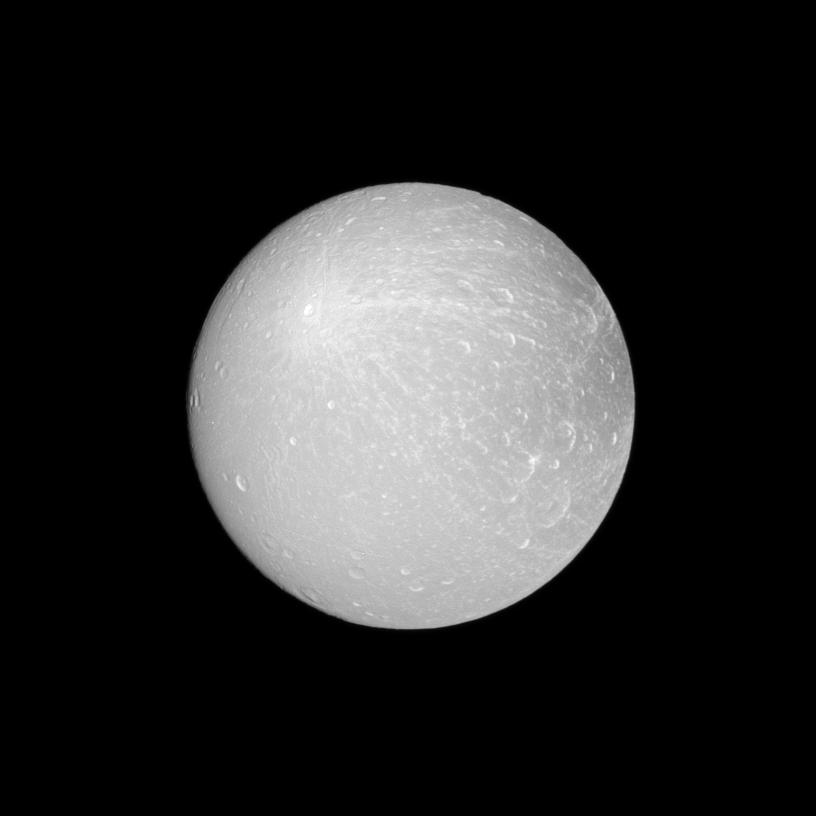Dione Ray Crater

| PIA Number | PIA14628 |
|---|---|
| Language |
|
The Cassini spacecraft looks at an example of a ray crater on the leading hemisphere of Saturn's moon Dione.
The ray crater is in the upper-left of the image and ejecta rays show up as brighter material emanating from the crater. To see an example of a ray crater on Rhea, see Icy Impact.
This view looks toward the leading hemisphere of Dione (698 miles, or 1,123 kilometers across). North on Dione is up and rotated 12 degrees to the left.
The image was taken in visible light with the Cassini spacecraft narrow-angle camera on July 23, 2012. The view was acquired at a distance of approximately 260,000 miles (418,000 kilometers) from Dione and at a Sun-Dione-spacecraft, or phase, angle of 5 degrees. Image scale is 2 miles (3 kilometers) per pixel.
The Cassini-Huygens mission is a cooperative project of NASA, the European Space Agency and the Italian Space Agency. The Jet Propulsion Laboratory, a division of the California Institute of Technology in Pasadena, manages the mission for NASA's Science Mission Directorate in Washington. The Cassini orbiter and its two onboard cameras were designed, developed and assembled at JPL. The imaging team is based at the Space Science Institute, Boulder, Colo.
For more information about the Cassini-Huygens mission visit http://saturn.jpl.nasa.gov or http://www.nasa.gov/cassini . The Cassini imaging team homepage is at http://ciclops.org .
Credit: NASA/JPL-Caltech/Space Science Institute
